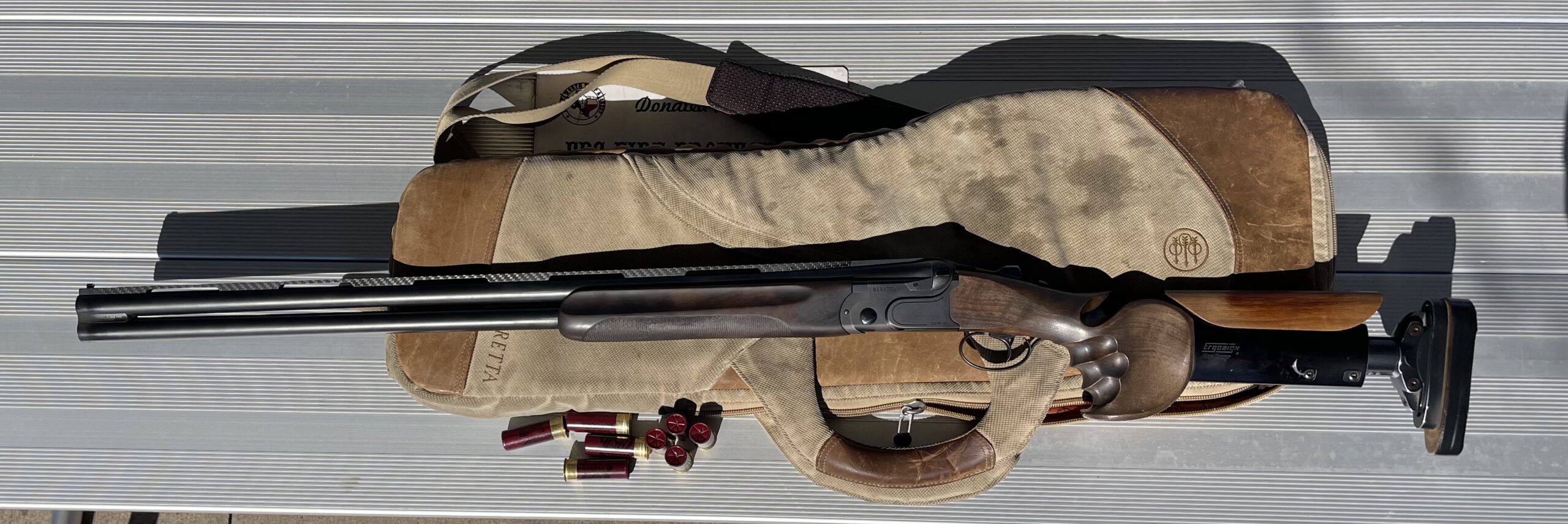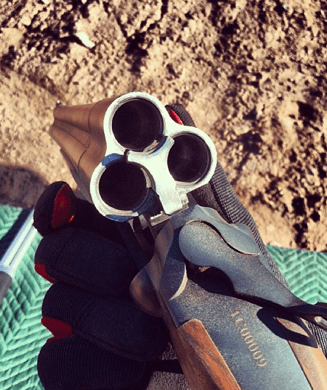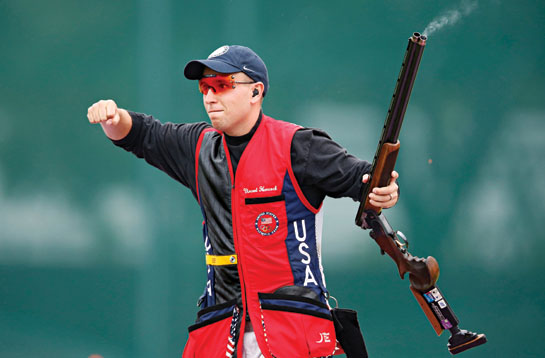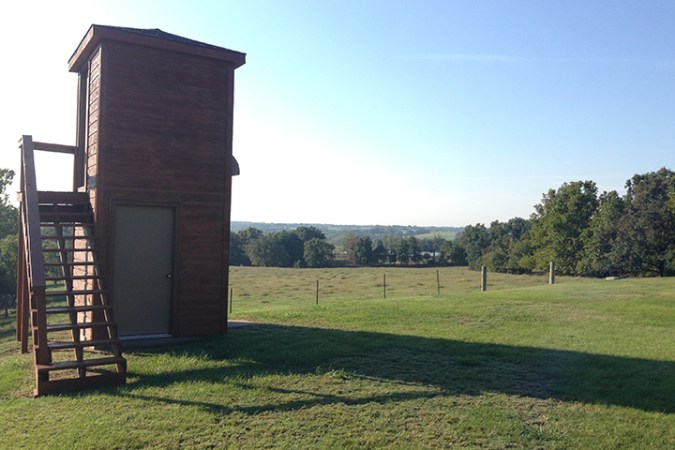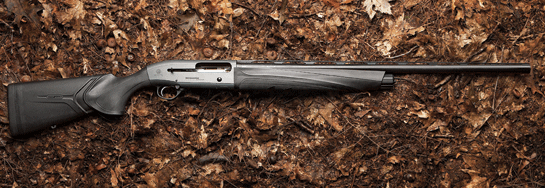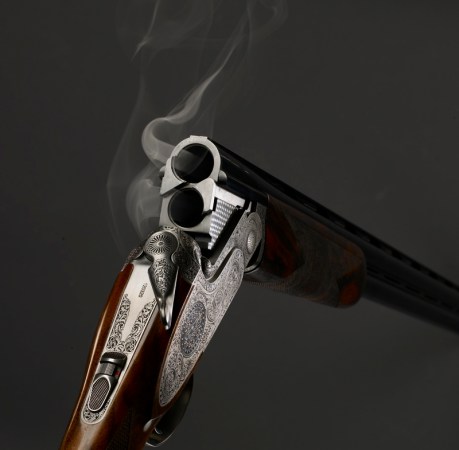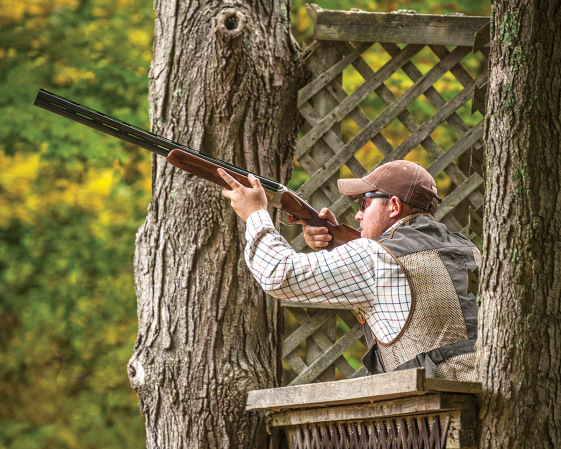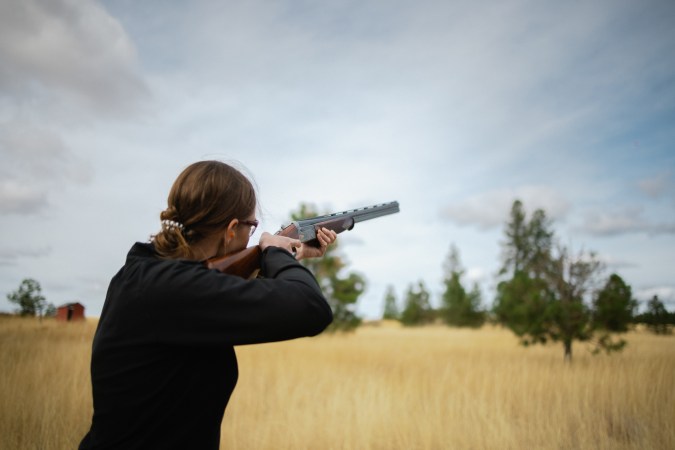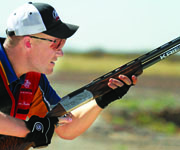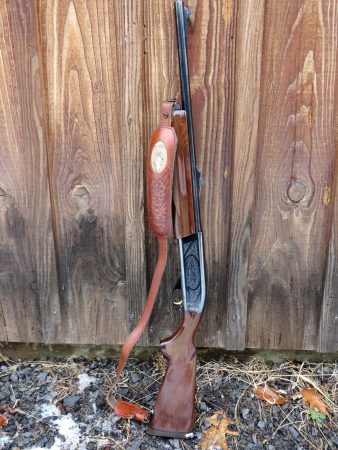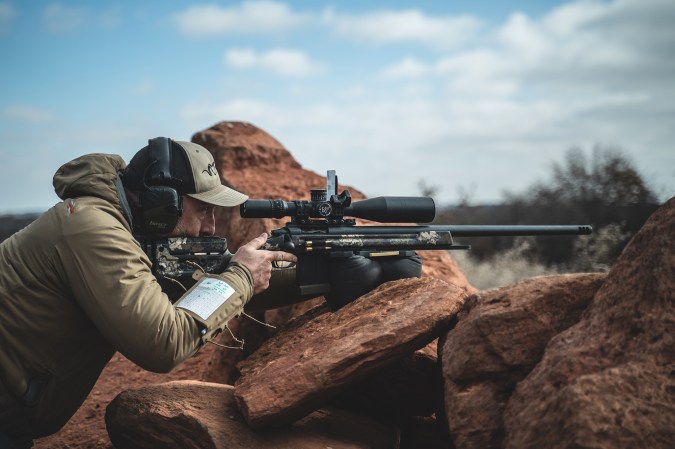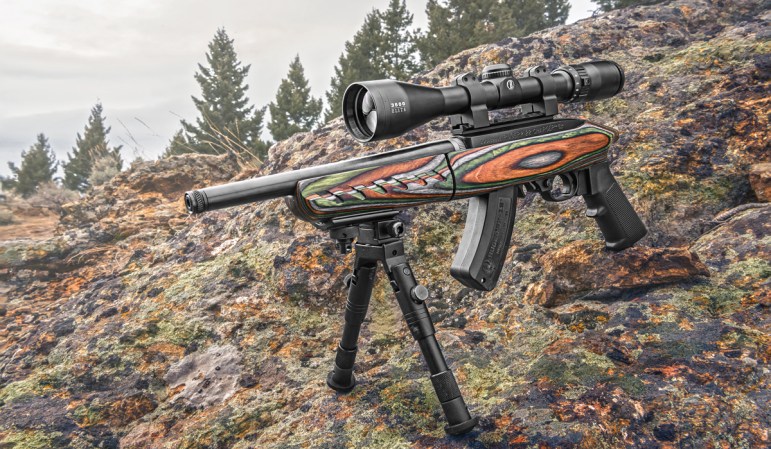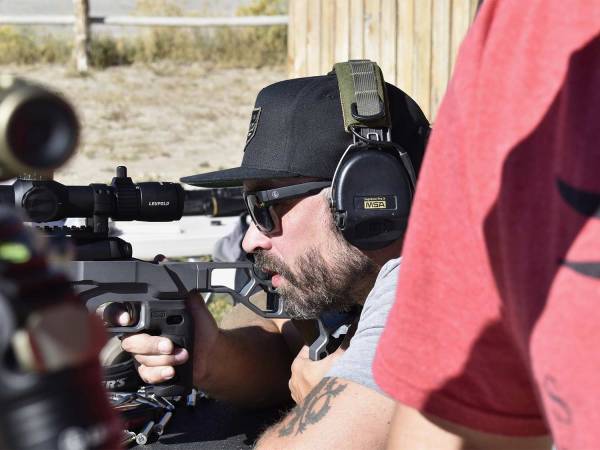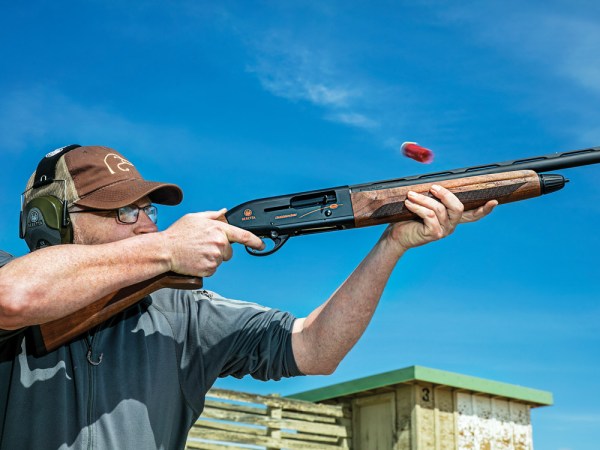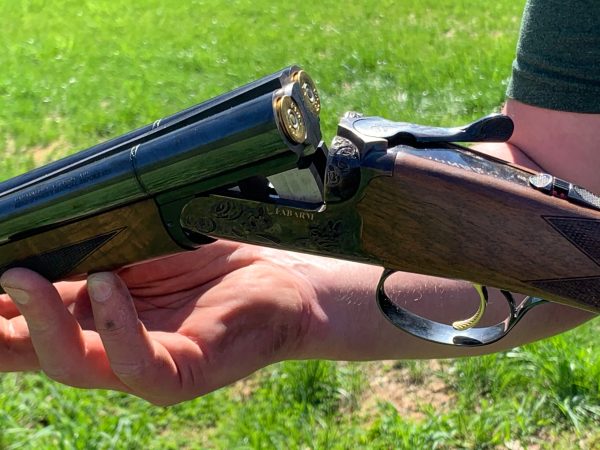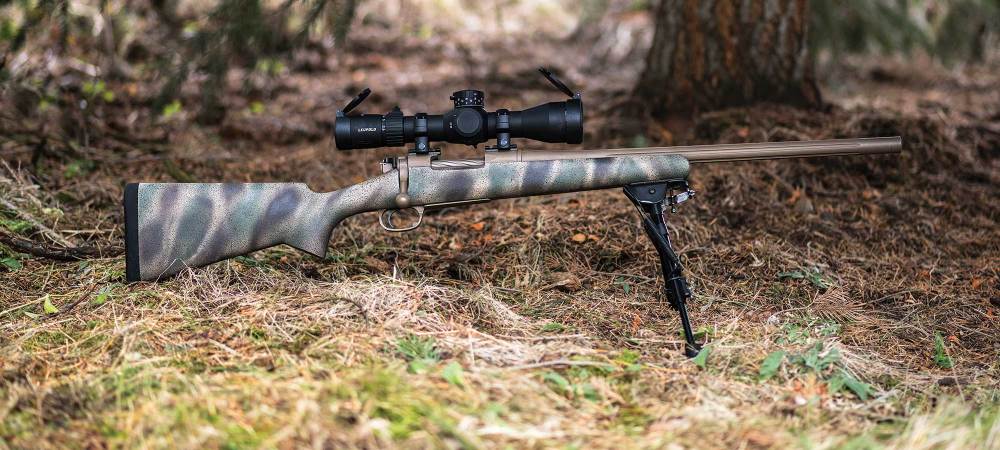We may earn revenue from the products available on this page and participate in affiliate programs. Learn More ›
When Vincent Hancock, the only shooter to ever win three Olympic gold medals in international skeet, won his first gold at the 2008 Beijing Games, he did it with a production-line Beretta DT10. There was no custom trigger job or stock modifications made to the shotgun. He didn’t use aftermarket chokes, sticking with the standard OptimaChoke system that comes in the box of many Beretta shotguns, like the 682 and some 687 models.
After winning in Beijing, he eventually switched to a custom stock, built by the German manufacturer Ergosign, but the remainder of Hancock’s DT11 Black is the same gun you or I can order from Beretta. He went on to win another gold in the 2012 London Games with a DT11 and again in the summer of 2021 in Tokyo—Hancock took 15th in 2016 Rio Olympics—with the DT11 Black. The Georgia native has also medaled in five of the nine (four golds and one bronze) World Championships he has entered. Here is a closer look at the shotgun that has won a record three Olympic gold medals in skeet shooting.
Specifications and Features of Vincent Hancock’s Beretta DT11 Black
- Gauge: 12
- Action: Over/under
- Capacity: 2
- Chamber: 3-inch
- Barrel type: Steel, Carbon-fiber rib
- Barrel length: 30 inches
- Barrel weight: 2.98 pounds
- Chokes: IC, M
- Front sight: Fiber-optic
- Length of Pull: N/A (Standard DT11 LOP is 14.37 inches)
- Trigger pull: N/A (Standard DT11 pull is 3½ pounds)
- Price: $15,000
Building a Custom Stock
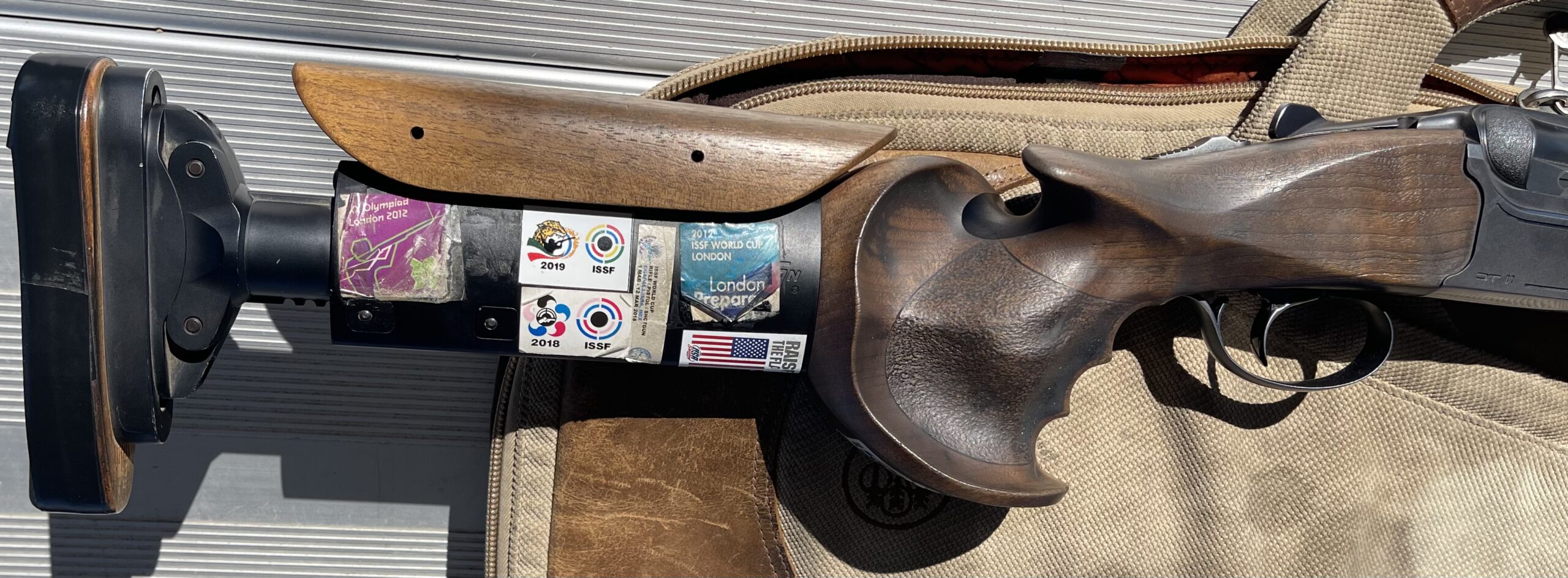
Hancock won his first gold with a standard Beretta stock but decided to move to a custom stock made by Wilfried Nil. He flew to Germany to have multiple molds of his right hand made until the fit was exact. The customization was so detailed that the creases from the palm of his shooting hand were impressed into the molds. Once the fit was precise, the wooden stock was cut on a CNC machine.
“It originated from an Olympic pistol grip,” Hancock says. “They are very unique in that the entire grip is molded to your hand. They basically take a cast of your hand around a pistol grip and when I mount the gun it comes perfectly into my palm.”
Once you move past the pistol grip, the rear of the stock is mostly comprised of aluminum, though there is a wooden comb that can be adjusted for drop in proportion to rib height. There is also a walnut butt plate that is fitted with a rubber recoil pad. Cast and pitch can be manipulated to fit individual shooters. There is also an adjustable, hydraulic recoil absorber to mitigate recoil. Weight can also be added and taken out of the stock by screwing metal rings on and off a balancer. Hancock set his stock up 11 years ago and hasn’t changed it.
“They don’t sponsor me or anything,” Hancock said of Ergosign. “Theyhave a superior product to the rest of the world. I’ve had the opportunity to look at other people that make [custom stocks] but I am a firm believer that I need to be using the best product rather than working with a company whose product I don’t believe in fully. And there is nothing wrong with the other [stockmakers], it’s just for me, this one is better.”
The Perfect Balance of Hancock’s Shotgun
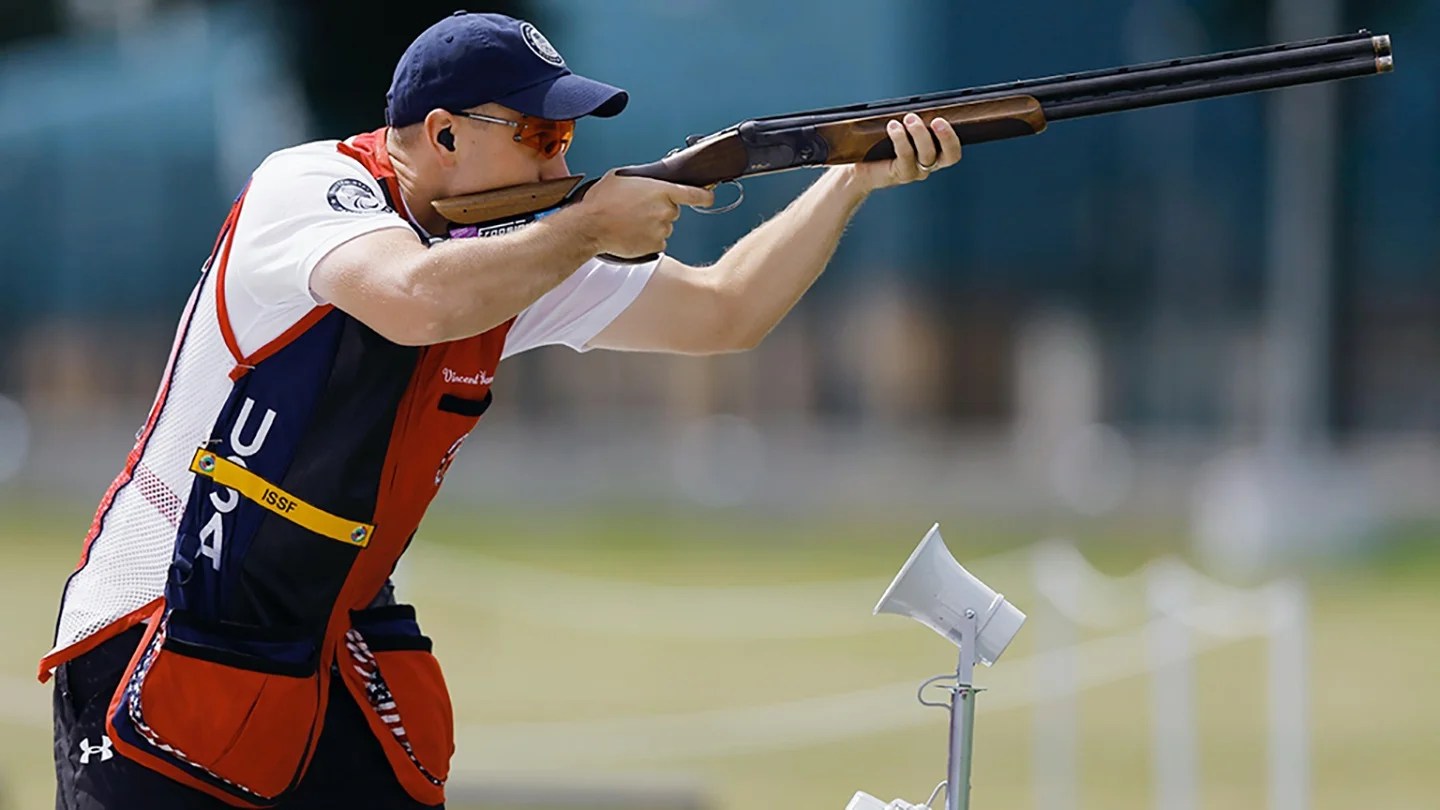
You might think that an Olympic skeet shooting champion like Hancock would be extremely picky about the overall weight, trigger pull, and length of pull of the shotgun he has won three golds with, but that’s not the case. Hancock has no idea how much his DT11 weighs, only that it’s over 8 pounds and that it’s balanced perfectly for his frame. He couldn’t tell me the trigger weight or length of pull of his gun either. His only real concern is that the barrel weight stays right around 1.35 kilograms (2.98 pounds). Because the DT11 Black has a carbon-fiber rib he can shoot longer 30-inch barrels (Hancock used to shoot 28-inch barrels without a carbon-fiber rib to keep the barrels at a lighter weight).
“That little bit of extra length [in the barrels] helps on some of the longer targets we have, but it doesn’t increase the weight of the gun so you can still move it as well and fluid as you could with a shorter barrel,” Hancock said. “We don’t have time to stop the gun and get it moving again, so if you have a heavy barrel, you need a heavy stock, so your gun is balanced. A heavy barrel will make you do what we call a check mark when you mount the gun. That means your barrel will drop as you go to mount, and you will have to bring it back up to get on target. In international skeet, you have to keep your gun on plane with the target at all times to break consistently [because the bird is moving so fast].”
Competitive shooters are fanatical about shotgun patterns. Many of them use aftermarket choke tubes to maximize pattern density. Hancock has done the same in the past. But a few years ago, he couldn’t get a pair of his favorite Muller chokes when owner Dan Muller moved his business to Florida. So, Hancock tried stock Beretta Optima HP chokes. They delivered a superior pattern, and he has stuck with them ever since.
Hancock shoots 2¾-inch No. 9 Federal paper-hull shotshells with a charge weight of 24-grams (Olympic shotshell payloads must be 24-grams). That is slightly less than the payload a 7/8-ounce shotshell delivers. There are about 511 pellets in a lead 7/8-ounce No. 9, and around 495 in a 24-gram No. 9 shell. Hancock doesn’t count pellet strikes when he patterns his shotgun on paper. He wants to see a solid thickening of strikes at the center of the target. Shot string isn’t a concern for him either. In international skeet, it simply doesn’t matter—the clays are flying too fast. Also, the targets are moving horizontally as opposed to trap where the targets fly away from the shooter and shot string is more of a factor.
“The shot is by the target so fast—I think it’s one in a half or two turns of the target—that shot string doesn’t even come into play,” Hancock says. “I’ve relied on a lot of information from Dean Clark, who was the coach for the U.S. Army marksmanship unit while I was there. He has done all kinds of pattern density testing and found that you’re really only going to have a few inches where the pattern is actually going to have an impact on the target.”
Read Next: Anschutz 1827 F Bionic: The World’s Best Biathlon Rifle
Three Shooting Questions for Vincent Hancock
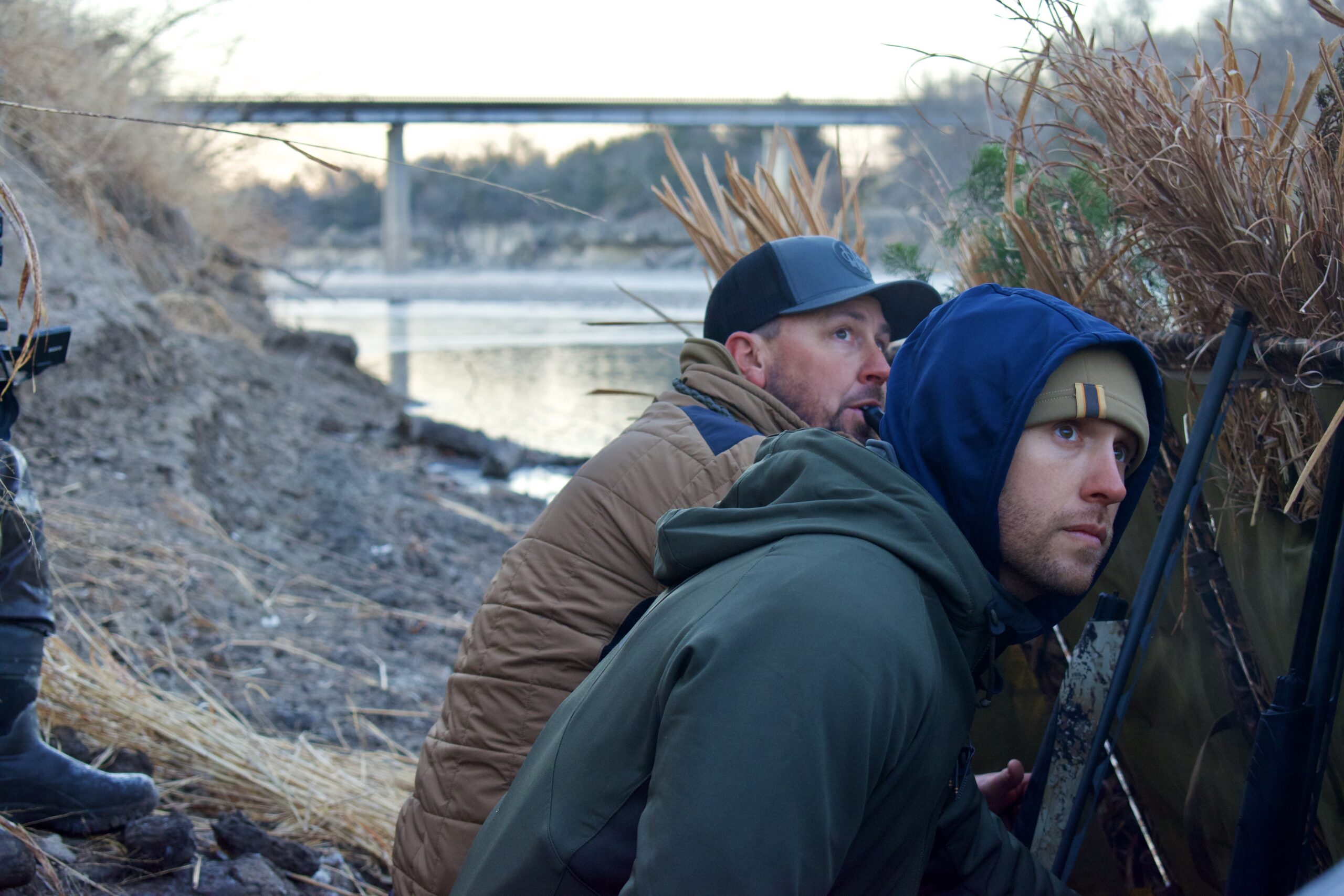
In late January 2022, I had the chance to duck hunt in Kansas with Hancock and a few buddies. He grew up quail hunting in Georgia but just started waterfowl hunting. Not surprisingly, he’s a damn fine wingshooter. There was a group of Canada geese that landed near his side of the blind one afternoon that got completely wrecked by Hancock and two other hunters. It was like someone had shot a hole through seven or eight geese back-pedaling over the decoys. There were dead honkers everywhere. He did miss at least once though, failing to kill a gadwall that was flying away at 40 yards—the toughest shot in waterfowl. It was nice to know that even Olympic champions whiff.
On our rides to and from duck hunting destinations, I had the chance to ask Hancock a few shooting questions. Here is the best of what he had to say.
OL: How do you mentally prepare to break targets with the consistency it takes to win three gold medals?
VC: The biggest thing is walking yourself through the process. And when you are competing you have time to do that. When you’re hunting you don’t have as much time. In duck hunting you have some time to see the bird, but in quail hunting you really don’t. But you can prepare yourself. Before I break a target, I have a checklist of the things I need to do to. Are my feet in the right place? Is my barrel alignment in line with where I want to break the target? [I tell myself] stay out in front of the bird, and match the speed of the barrel to the bird when it comes out of the house. Hold the bird for an extra split second so you can see the bottom edge of it. If you don’t see what you are shooting clearly, you won’t hit it. And finally, pull the trigger. That all happens very fast, but I think about all those elements before I shoot, every time. The key to better shooting is to have a process.
OL: You shoot in front of crowds or with new people, like on our duck hunt in Kansas, all the time. Do you ever feel pressure to perform in those situations?
VC: There’s definitely a feeling you’re going to get shooting in front of people. If I was Tiger Woods I wouldn’t want to walk onto a golf course and duff one off the first tee. It’s kind of the same thing for me. I know there are expectations because I’ve been successful. But it’s also fun, and that’s what I try to focus on now. When I was young, I felt a lot of pressure to perform. I struggled to shoot in front of people as a kid. But a sports psychologist that I worked with said: ‘You just have to envision everyone is there to watch you because you are really good. And whether you shoot well or not, they’re still going to be impressed with how you shoot.’ It makes it so much easier [when I] miss. And it’s more fun that way. Because I am really good at this, and it gives me a chance to show people that. You have to have the confidence to go into these situations and know you will perform well.
OL: You dropped three targets on your last round in Tokyo before going to a shoot-off and winning gold. How are you able to shake off misses, refocus, and be successful?
VC: You have to be able to put it [missing] out of your mind and focus on the next target. In the last round I went from perfect to down three targets. To miss that much, something went wrong. So, I had to think about what I was doing wrong. You have to play that back in your mind. Find the issue and then tell yourself the correction. That’s easier said than done. Because it can be really frustrating missing targets, but you can’t do anything about it. And as I’ve gotten older, I’ve become better at realizing that everyone is going to miss targets at some point. You have to stay positive. I broke 122 targets and missed three at the Olympics. So, I had 122 successes and three failures. I knew that I had to make a correction to be successful and that’s what I did. I figured out what I did wrong, corrected it, and won.

